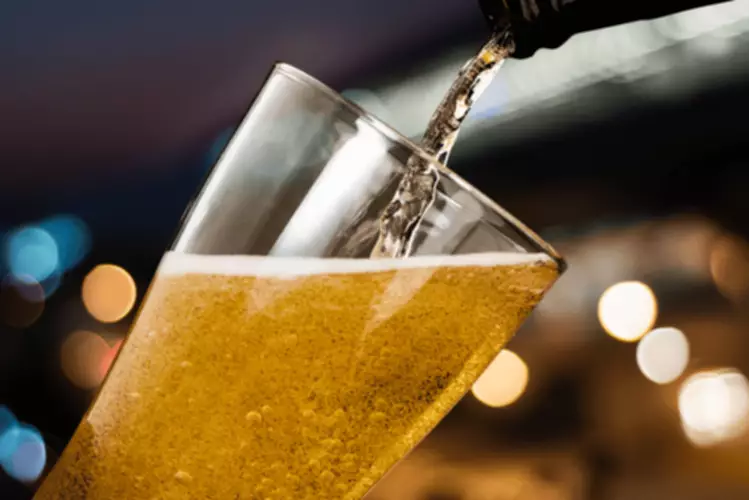
Instead, antisocial alcoholics drink alone and typically struggle with co-occurring mental health problems. Young adults tend to drink less often than older alcoholics, but they binge drink more. The young adult subtype also often abuses other substances besides alcohol and rarely seeks treatment. This subtype of alcoholics is typically middle-aged, well-educated, and may seem to have it all “together” on the outside. They are likely have a steady job, a seemingly stable family life, and do not often fit into the traditional stereotype of an alcoholic. The largest percentage of alcoholics fall into this group, as NIAAA publishes that 31.5 percent of all alcoholics in the United States fit this subtype.
Outpatient Treatment

Confirmation of the hypothesis that only two broad categories of alcoholics exist would represent an important breakthrough for theory development and treatment matching. Treatment matching and patient placement also might profit from this knowledge, provided that different therapeutic approaches and treatment settings prove to be differentially effective with different types of alcoholics. Despite one-and-a-half centuries of progress and a remarkable acceleration of interest in alcohol research in the past two decades, these critical issues continue to define the challenge as well as the promise of typology theory.
Lucky Daye on His New Album ‘Algorithm,’ Working With Bruno Mars and Saving a Woman’s Life With Raye
- If you or someone you know is experiencing alcohol withdrawal, seek medical attention immediately.
- The report found an estimated 400 million people lived with alcohol and drug use disorders globally.
- Over 6 percent of American adults battled an alcohol use disorder (AUD) in 2015, the National Institute on Alcohol Abuse and Alcoholism (NIAAA) publishes.
- Yes, believe it or not, that little bottle of cocktail bitters we bartenders use to flavor cocktails contains alcohol.
- They are not meant as a diagnostic to determine if someone is suffering from alcoholism.
- It can also help prevent seizures or other complications that may arise.
They may find it extraordinarily challenging and suffer frequent relapses or give up the goal of sobriety completely. Others, whose drinking is only more recently affecting their lives to a significant 5 types of alcoholics degree, may be less affected by the stigma that surrounds the fact that alcoholism changes personality. Typically, this type of alcoholism starts before the age of 25 (early onset).
- Researchers found that about 62% of functional alcoholics work full-time, 3.6% are in school full-time, and 5% are retired.
- There are hundreds of types of undistilled alcoholic drinks but the most popular ones are beer, wine, and cider.
- However, as with bourbon and scotch, any agave spirit aged in barrel, such as reposado and añejo bottlings, can become cloudy over time.
- In the DSM-5, alcohol use disorder is further classified into categories of mild, moderate, and severe.
- A standard drink of fortified wine is 3 to 4 ounces, which contains 17% pure alcohol.
- Likewise, while the alcohol concentrations listed are considered typical, there is significant variability in alcohol content within each alcoholic beverage.
Alcopops (RTDs – Ready to Drink) Flavored Alcoholic Beverages
Alcohol is a preservative, and since most straight liquors are often more than 40% alcohol by volume (ABV), spirits rarely go off and spoil like wine or beer. However, aromas and flavors can deteriorate over time, meaning you may not be doing your special-occasion scotch or tequila any favors by letting https://ecosoberhouse.com/article/15-benefits-of-the-alcohol-free-lifestyle/ them sit around too long after opening. Liqueurs are sweetened spirits that usually range between the 15-30% ABV mark and are often flavored with various herbs or spices. While other different types of alcohol may be more common, liqueurs can be essential to the perfect cocktail creations.

If you think you might have an alcohol use disorder or if you are worried that your alcohol consumption has become problematic, it is important to talk to your doctor to discuss your treatment options. In 1876 the association established the Quarterly Journal of Inebriety, which, over a period of 38 years, published numerous articles by leading physicians from the United States and abroad about the different forms of alcoholism. Similar societies formed in England, under Norman Kerr’s leadership, and in France, under Valentin-Jacques Magnan’s direction. Through national and international meetings and a wide circulation of books and journals, the writings of these physicians and alienists became instrumental in defining the medical response to what was considered the disease of inebriety. Your health care provider or mental health provider will ask additional questions based on your responses, symptoms and needs.
- A study by scientists at the NIAAA, part of the National Institutes of Health (NIH), analyzed 1,484 survey respondents who met specific diagnostic criteria for alcohol addiction.
- Individuals with Type 1 alcoholism have high harm avoidance, which means they are more cautious, apprehensive, and inhibited toward their use of alcohol.
- It suppresses the nervous system, causing shallow breathing, a slowing heartbeat, and coma.
- That is why alcohol detox and alcohol withdrawal treatment is administered by medical professionals.
- “I don’t think alcohol is evil by any means but it’s a riskier proposition as you get older—you have to be more cautious,” says Moore.
Ale is made from another form of yeast called Saccharomyces cerevisiae. This type of yeast rises to the top of the tank during fermentation, giving the alcohol an aromatic flavor profile. Lager beers are crisp and made with a special type of yeast called Saccharomyces pastorianus. During fermentation, the yeast gathers at the bottom of a tank for a few months before being ready to enjoy. One serving of fortified wine can have almost double the amount of calories as a red wine. All grapes are the same light color inside, so any grape can be used to make white wine.
